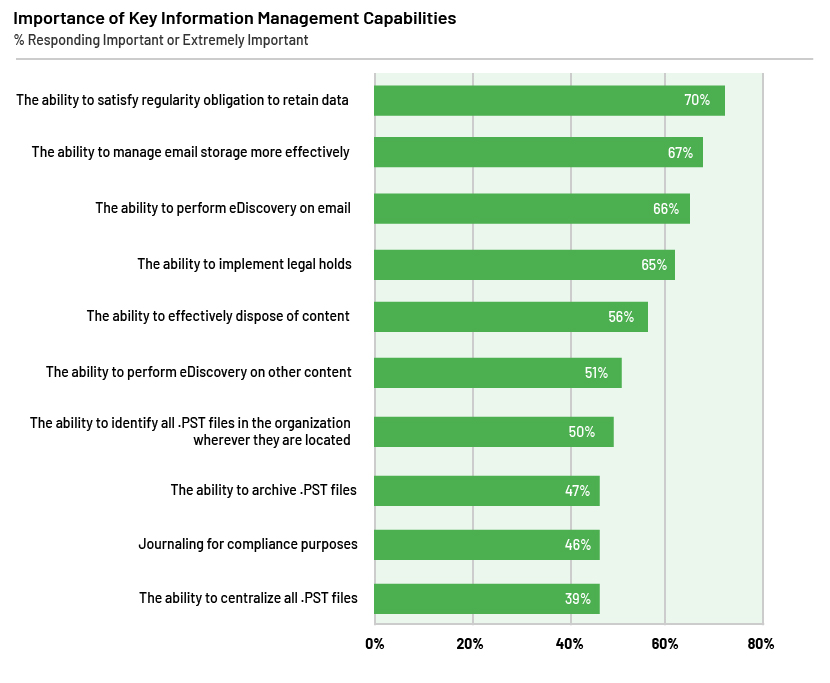Published on April 29, 2024 by Devika Jain
Introduction
All large companies now conduct their business on social media platforms. According to a recent study, 65 Fortune Global 100 companies are available on Twitter, 54 have Facebook Addicts and 33% of all these companies publish blogs regularly[1]. Social media platforms have a legal obligation to capture and preserve all information shared on them. In 2006, the Federal Rules of Civil Procedure included electronically stored information (ESI) so that information shared on social media platforms could be preserved and disclosed in the legal discovery process. In generic terms, “e-discovery is the process that helps discover any information from ESI such as emails, Microsoft documents, browser histories, text messages, social media posts and other related files.” The process involves the following steps: identifying, preserving, collecting, searching, reviewing, analysing and producing.
This blog provides a brief overview of the role of social media in e-discovery and its positive/negative impacts, and describes how e-discovery is an effective tool for large organisations in terms of handling legal investigations, with supporting examples and case studies.
The role of social media in e-discoveryDiscovery is not a new concept in law. It refers to an exchange of information between the two parties to a dispute. Any information available on a social media site is discoverable. In other words, any post, picture or information available on a public platform is admissible evidence in litigation. For instance, in Romano v Steelcase Inc., the plaintiff sued her employer after she fell at the workplace and claimed compensation for permanent injuries. The defendant compelled the court to request the plaintiff to produce her Facebook and Myspace pages, as they showed a completely different story. The court granted the request and stated that any information on her Facebook page is admissible in litigation[2]. Moreover, every company has a legal obligation under its document retention policy to retain all emails and documents, including social media activity, to prevent conflict in the discovery phase of litigation. A company is a separate legal entity that can identify what information has to be retained and who and what fall under its retention policy. Apart from the foregoing, a court could also decide on certain parameters to differentiate and prevent the use of confidential information available on social media.
Impacts. The major challenge for e-discovery is the “authenticity” of the information available on social media platforms. According to the new Federal Rule of Evidence 901, if the information available on the social media platform is sufficient to support the findings of a case, it is admissible. For instance, in Griffin v State in 2010, the court accepted information on a MySpace page as trustworthy evidence, as it showed the true relationship between the deceased and the defendant. The court certified the account and the information and held the decision[3]. This shows that courts are now comfortable with using information available on social media platforms as evidence, in line with strict policy that such information should not be changed, tampered with, deleted or concealed in any circumstance during a trial.
The “reliability” of documents is another major concern. People generally post fake news to draw the attention of target viewers. In other words, any information posted on social media sites is more for the purpose of getting likes rather than for providing a genuine picture. The landmark case Theresa Giacchetto v Patchogue-Medford Union Free School District in 2013 upheld that any information on social media sites sheds the realism of the fact and, thus, cannot be admissible as evidence, but is not a subject to be avoided[4].
An effective tool. E-discovery is an essential element and the most trusted activity for finding evidence in the pool of digital information. It provides a company with a platform to manage all its ESI under one roof. For instance, IBM creates 2.5 quintillion bytes of data every day.

source: White paper[5]
E-discovery ensures that litigants have a good knowledge of their data and can discuss their issues at pre-trial discovery meetings. Nonetheless, parties are also able to determine which documents can and cannot be produced. However, e-discovery must be managed properly. There should be a proper classification of documents, as to what should be produced and what should not; otherwise, a party’s case could be jeopardised[6]. Mismanagement of the discovery process would lead to adverse effects including financial loss, court fines and sanctions, and reputational damage.
Conclusion
Social media platforms such as Facebook, Twitter and Instagram contribute on a daily basis to the stream of data. When it comes to litigation, companies need to comply with legal requirements to present all information, although there are certain complexities. E-discovery, therefore, provides a platform for all large enterprises dealing with legal investigations to familiarise themselves with the data available and to streamline ESI in line with these requirements. It helps them search for emails, hard drives and any other computer files related to an investigation effectively and efficiently.
How Acuity Knowledge Partners can help
We provide a unified managed e-discovery review service that combines experienced attorney reviewers with technology experts. Our team of attorneys are experts in technology optimisation and are fully integrated with our product team to ensure that review technologies are powerful and reviews are efficient. In addition, our strict workflow procedures and quality-control processes reduce an external lawyer's time spent on quality control to just under 5% from 20%, saving significant costs for companies and enabling litigators to focus on case strategy.
Our internal legal teams accelerate projects to meet tight deadlines, getting to the facts quickly to assess the merits of a case, and deliver results in a timely, economical and cost-effective manner.
Source
[1] eDiscovery rules applied to social media: what this means in practical terms for business (no date), Find Law. Available at https://technology.findlaw.com/modern-law-practice/ediscovery-rules-applied-to-social-media-what-this-means-in.html
[2] Cicayda, A. (2018), Social media and e-discovery: what courts are saying about the third-party doctrine, Legal Tech News. Available at https://www.law.com/legaltechnews/2018/11/05/social-media-and-e-discovery-what-courts-are-saying-about-the-third-party-doctrine/?slreturn=20190128132521
[3] Weiskopf N. (no date), Social Media and E-Discovery: New Tools and New Challenges, LexisNexis. Available at http://www.lexisnexis.com/documents/pdf/20100930102657_large.pdf
[4] Verga, M. (2017), Gone viral: social media in e-discovery, Relativity. Available at https://www.relativity.com/blog/gone-viral-social-media-in-e-discovery/
[5] Why e-discovery should be a top priority for your organisation, 2013, white paper (online). Available at
[6] Why e-discovery should be a top priority for your organisation, 2013, white paper (online). Available at
Tags:
What's your view?
About the Author
Devika has been involved in executing various legal support services tasks independently including drafting, reviewing and legal document formatting in Acuity and has 13 years of experience in providing end to end paralegal services to clients worldwide.
She has been part of various projects related to contract lifecycle management, abstraction and summarization and e-discovery services covering US banking & financial companies.
Like the way we think?
Next time we post something new, we'll send it to your inbox








